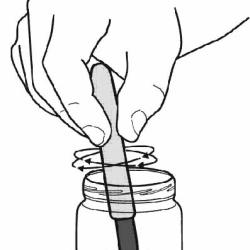Source Institutions
Source Institutions
Add to list Go to activity
Activity link broken? See if it's at the internet archive

In this activity, learners create a mixture of water, alcohol and permanent marker ink, and then add salt to form a colored alcohol layer on top of a colorless water layer. The reason this happens is complicated: permanent marker ink dissolves in alcohol but not water; alcohol and water mix, but alcohol and salt do not. Adding salt to water and alcohol causes the salt to dissolve in water, and the salt water sinks below the alcohol/marker ink because it is more dense. Extensions are provided, along with additional background information about electron charge and solubility, and real world biology applications of "salting out." Part of the "No Hassle Messy Science with a Wow" activity guide by OMSI where all activities use only household materials.
- 10 to 30 minutes
- 45 to 60 minutes
- $1 - $5 per group of students
- Ages 11 - 14
- Activity, Experiment/Lab Activity, Lesson/Lesson Plan
- English, Spanish
Quick Guide
Materials List (per group of students)
- 4 small jars with lids (e.g., baby food jars)
- 1 roll masking tape
- 1 permanent marker (e.g., Sharpie)
- 2 pop-top squeeze bottles (e.g., water or sports drink)
- 1/2 cup isopropyl alcohol (at least 90% concentration)
- 1/2 cup water
- 1/2 cup salt
- 1 plastic cup, 8 oz.
- 2 teaspoon measures
- 1 8.5" x 11" plastic protective sleeve (optional)
Subjects
-
Engineering and Technology
-
Engineering
- Bioengineering/Biomedical Engineering
-
Engineering
-
Physical Sciences
-
Chemistry
- Chemical Bonding
- Solutions
-
States of Matter
- Solids
- Liquids
-
Structure and Properties of Matter
- Atomic Structure
- Volume and Density
-
Chemistry
Audience
To use this activity, learners need to:
- see
- see color
- read
- touch
Learning styles supported:
- Involves hands-on or lab activities
Other
Foreign language versions of this resource:
Components that are part of this resource:
Access Rights:
- Free access
By:
- Oregon Museum of Science and Industry
Rights:
- All rights reserved, Oregon Museum of Science and Industry, 2007
Funding Sources:
- National Science Foundation
- Camille and Henry Dreyfus Foundation
